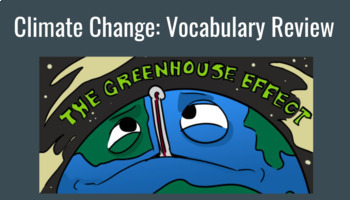Middle School Special Education Climate Change Unit
- Google Drive™ folder

Description
A fully digital (Google Drive / Google Slides / Google Docs) Mild/Moderate Special Day Class Science Introductory unit (1st of 5 interdisciplinary units that are CCSS (ELA) & NGSS aligned [6th-8th grade]). This unit introduction is perfect for a mild/moderate middle school special education class where students may have significant academic challenges/learning disabilities, ADHD, emotional disturbance, and/or intellectual disabilities. The lessons are scaffolded; however, the content, vocabulary, and labs/activities remain age and grade level appropriate and are aligned to middle school science standards (NGSS, CA).
The majority of the content is presented through Google Slide presentations that correlate to a Google Document (graphic organizer for notes). The majority of the notes are very structured and have lots of supports (sentence frames, highlighting correct answers, sentences are numbered, less text per page, etc) earlier in the unit, and a gradual release of supports as the weeks go on. Along with the slides/notes, there are links to videos, websites, structured "research" projects, labs/activities, creative writing assignments, coloring pages and more!
This is one of my favorite units to teach, the students get really into it! There is so much real world application that makes it very easily relatable for them. It's also a great unit to introduce different scientific content areas such as chemistry or earth and environmental sciences. This was designed for Special Education Middle School and predominantly correlates to 6th-7th grade NGSS and CCSS ELA standards, but there's a bit of a mix across grade levels. Included are structured notes as well as heavier accommodated notes for more moderate/severe populations. It would be appropriate for elementary levels too!





